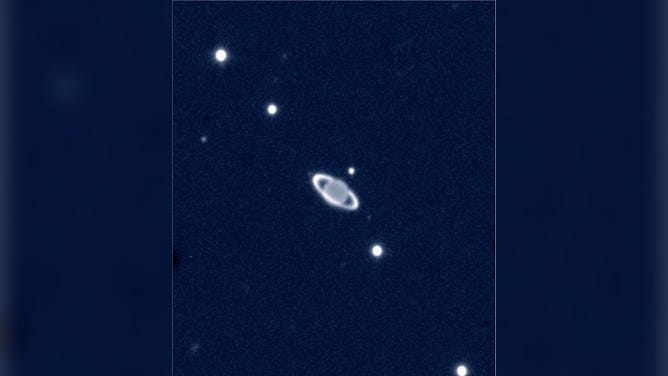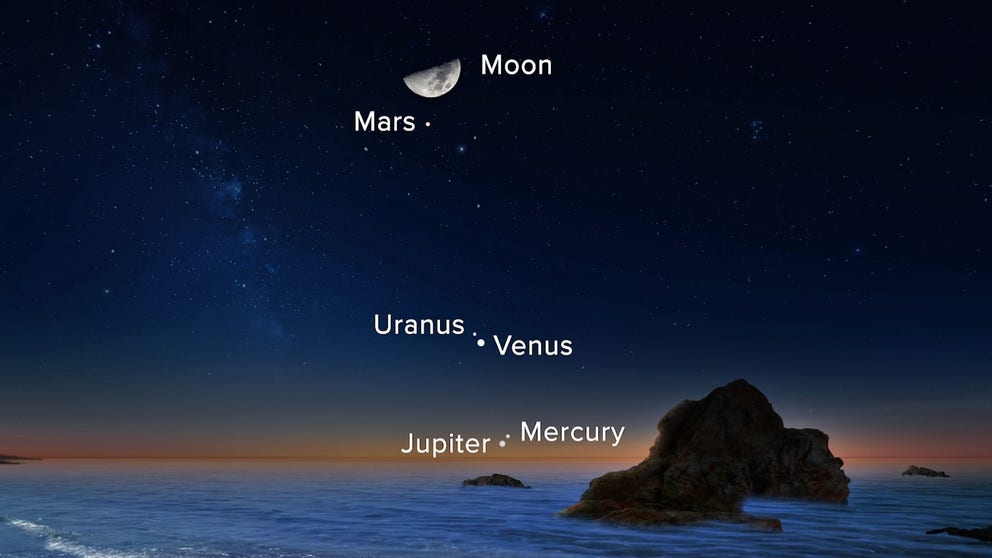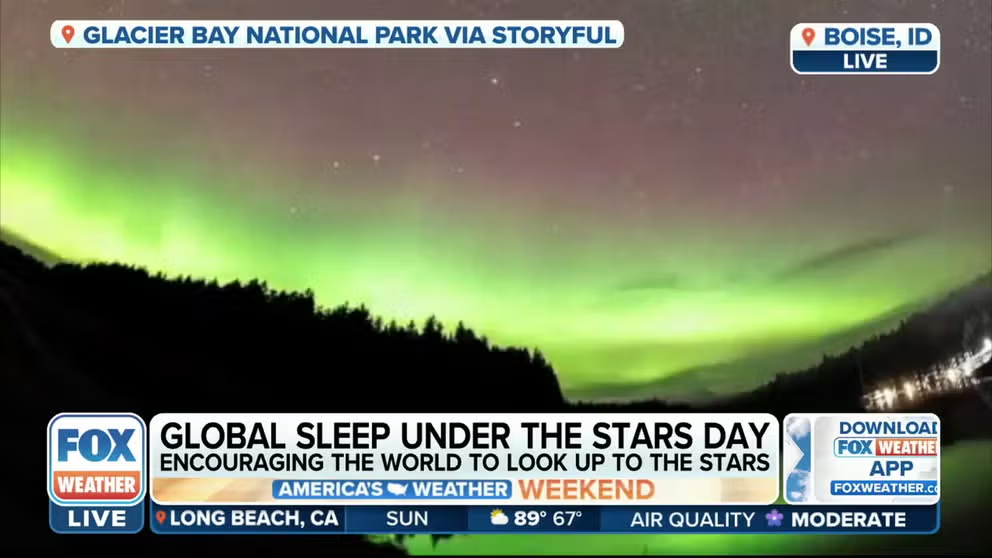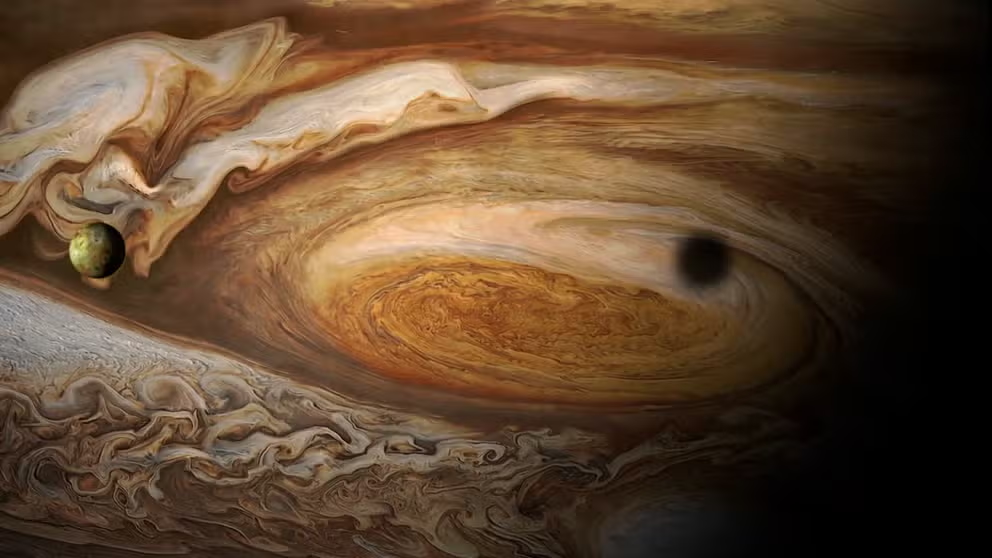When and how to see Mercury, Venus, Mars, Jupiter and Uranus at the same time
The planets will align for stargazers at the end of the month. Most call the alignment of two planets and the moon rare. This month offers a glimpse of five planets and the moon aligned.
How and when to watch 5 planets align in the night sky this week
A planetary parade is expected after sunset on March 28 when Jupiter, Mercury, Venus, Uranus, Mars and the moon all align.
Good news, sky watchers and amateur astronomers. There’s going to be a planetary alignment this week, and you definitely don’t want to miss it.
Now, there won’t be a literal straight line of planets seen in the night sky, but at least five planets – plus the moon – will all be visible in almost an arc shape as seen from Earth.

File: In a rare alignment, the crescent Moon (C) rises with the planets Venus (L) and Jupiter (top) over boats at a dock at dawn on February 4, 2008, in Titusville, Florida. Three more planets will join this month.
(STAN HONDA/AFP / Getty Images)
What is planetary alignment?
In the strict sense, a planetary alignment happens when several planets form a line as seen from the sun, and at other times, the planets may form an arc.
But typically, a planetary alignment will involve a number of different planets that gather together closely on one side of our sun, according to the website starwalk.space.

FILE: A crescent moon (L) and the planets Venus (C, bottom) and Jupiter (R) are seen in a rare alignment over the Manhattan skyline on December 1, 2008 from New York.
(STAN HONDA/AFP / Getty Images)
Which planets will be visible and when?
Mercury, Venus, Mars, Jupiter and Uranus will all be visible during this late-March planetary alignment period, according to starwalk.space.
The best day to see these planets and the moon will be on March 28, but if you have the right equipment, you’ll actually get to enjoy this celestial event a few days before and even after the 28th, according to Rick Fienberg, senior contributing editor for Sky & Telescope and senior advisor to the American Astronomical Society.
STARGAZERS' DELIGHT: WHERE IS THE BEST PLACE TO BE AMAZED SLEEPING UNDER THE STARS?
Find the best National Park to sleep under the stars!
Sleep under the stars Monday for Global Sleep Under the Stars Day. Linda Mazzou, former Superintendent of Bryce Canyon National Parks helped Bryce to achieve "dark sky' status and explains it to FOX Weather and tells us the best places to sleep under stars.
Location, location, location
Even though all five planets will be in the same area of the night sky this month, catching all five simultaneously could prove challenging, depending on where you’re located.
Jupiter and Mercury will appear very low in the western sky just after sunset, Fienberg told FOX TV Stations.
"Unless you have a clear sky and a nearly flat western horizon free of obstructions such as trees or buildings, you won’t see Jupiter and Mercury," Fienberg said.
However, if you do happen to have all the aforementioned advantages, you could potentially see Jupiter and Mercury in addition to the other three planets using binoculars.
Exploring Jupiter's Great Red Spot—the biggest storm in our solar system
Famous for its Great Red Spot, Jupiter is a gas giant with some of the most fascinating weather in the solar system.
‘TAKE BACK THE NIGHT SKY’: HOW A COLORADO TOWN BECAME A DARK-SKY COMMUNITY
Jupiter will actually appear brighter than Mercury as well, Fienberg said.
The brightest planet out of the bunch will be Venus.
Venus will be higher in the sky to the upper left of Jupiter and Mercury, and this one you can’t miss.
Venus will appear brighter than any star, and you won’t need any equipment to see it, Fienberg said.
The elusive Uranus might be a bit more difficult to find without visual aids, Fienberg advised.

FILE: This vivible light transmission, near-infrared image of the planet Uranus and several of its moons was taken by the European Southern Observatory (ESO) Paranal Observatory in Chile November 19, 2002. The rings of Uranus were first observed in 1977 and later photographed by Voyager-2 spacecraft.
(ESO / Getty Images)
Uranus will appear near Venus, but it will be very faint. In fact, you’ll probably need a telescope just to distinguish it from surrounding stars.
And lastly, Mars will also appear very high in the southwestern sky, and it will have a noticeably orange hue.
Plan your gazing
"On the 27th, the not-quite-quarter moon is below and to the right of Mars," Fienberg noted. "On the 28th, the first quarter moon is above and to the left of Mars."
Let FOX Weather help you decide the best place to watch from. You can add events in the Plan tab of the FOX Weather app and keep an eye on the weather in different places to identify the clearest spot.
Happy planet hunting!


